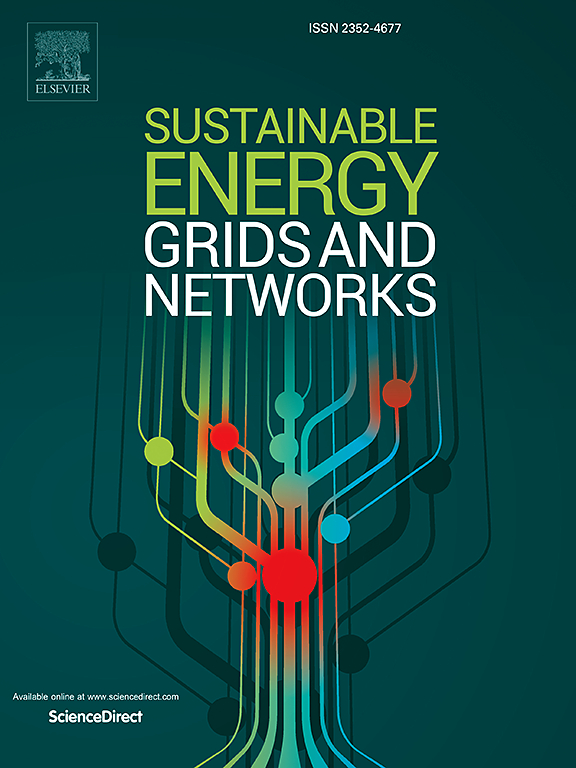Resilience-oriented distributed generation planning of distribution network under multiple extreme weather conditions
IF 4.8
2区 工程技术
Q2 ENERGY & FUELS
引用次数: 0
Abstract
Planning resilient and elastic distribution networks has become an effective strategy for withstanding extreme weather events. However, conventional research often overlooks the impact of multiple extreme weather conditions and only considers planning for one specific type of extreme weather. This paper proposes a resilience-oriented distributed generation planning approach for distribution networks, which takes into account multiple extreme weather conditions. Firstly, a line fault probability model is established to capture the impact of typhoons, rainstorms, ice and snow weather. Secondly, a fault scenario generation and simplification method based on modified monte carlo simulation and k-means clustering is proposed to ensure the representativeness and computational efficiency of the selected scenarios. Additionally, a two-stage stochastic mixed integer programming model is introduced to enhance system resilience through distributed generation configuration and network topology reconstruction. The first stage focuses on determining the number, location, and size of distributed generation with economic objectives, while the second stage addresses the recovery method after an uncertain extreme event based on the distributed generation configuration obtained in the first stage. The proposed model is applied to modified IEEE 33-bus system and IEEE 123-bus system. Compared with the conventional method, the DG configuration results are consistent and the solution time is reduced by 70–80 %, achieving a balance between accuracy and efficiency. Furthermore, it effectively reduces load shedding by nearly 90 % by optimizing DG utilisation.
多种极端天气条件下面向弹性的配电网分布式发电规划
规划弹性和弹性配电网络已成为抵御极端天气事件的有效策略。然而,传统的研究往往忽略了多种极端天气条件的影响,只考虑对一种特定类型的极端天气进行规划。本文提出了一种考虑多种极端天气条件的配电网络弹性分布式发电规划方法。首先,建立线路故障概率模型,捕捉台风、暴雨、冰雪天气对线路故障的影响;其次,为了保证所选场景的代表性和计算效率,提出了一种基于改进蒙特卡罗模拟和k-means聚类的故障场景生成与简化方法;引入两阶段随机混合整数规划模型,通过分布式发电配置和网络拓扑重构增强系统弹性。第一阶段的重点是确定具有经济目标的分布式发电的数量、位置和规模,第二阶段的重点是在第一阶段得到的分布式发电配置的基础上,研究不确定极端事件后的恢复方法。该模型应用于改进的IEEE 33总线系统和IEEE 123总线系统。与传统方法相比,DG配置结果一致,求解时间缩短了70-80 %,实现了准确性和效率的平衡。此外,通过优化DG利用率,它有效地减少了近90% %的负载减少。
本文章由计算机程序翻译,如有差异,请以英文原文为准。
求助全文
约1分钟内获得全文
求助全文
来源期刊

Sustainable Energy Grids & Networks
Energy-Energy Engineering and Power Technology
CiteScore
7.90
自引率
13.00%
发文量
206
审稿时长
49 days
期刊介绍:
Sustainable Energy, Grids and Networks (SEGAN)is an international peer-reviewed publication for theoretical and applied research dealing with energy, information grids and power networks, including smart grids from super to micro grid scales. SEGAN welcomes papers describing fundamental advances in mathematical, statistical or computational methods with application to power and energy systems, as well as papers on applications, computation and modeling in the areas of electrical and energy systems with coupled information and communication technologies.
 求助内容:
求助内容: 应助结果提醒方式:
应助结果提醒方式:


